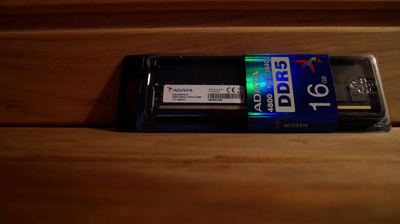
My thoughts on the ADATA Premier DDR5 4800MHz 16GB UDIMM Memory (2024)
My thoughts on ADATA DDR5 memory: performance, stability, and cost-efficiency.
Introduction
I recently upgraded my computer memory to ADATA Premier DDR5 4800MHz 16GB UDIMM Memory. The leap from DDR4 to DDR5 made me curious about the performance improvements.
Some photos (click to enlarge)
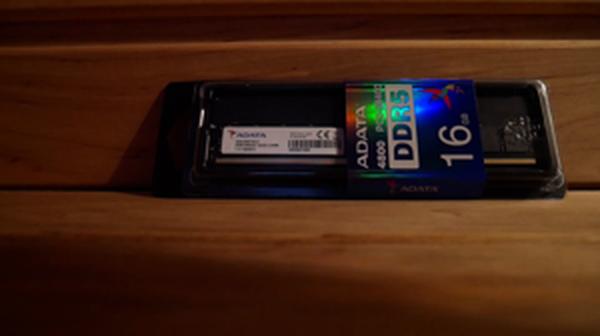
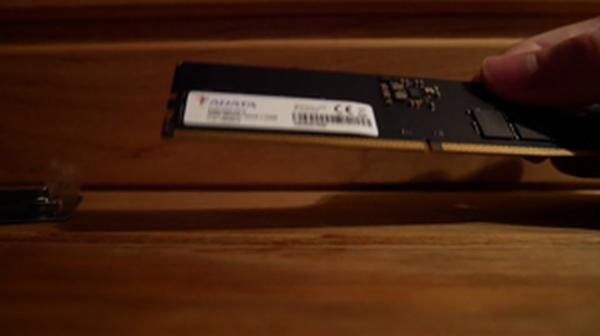
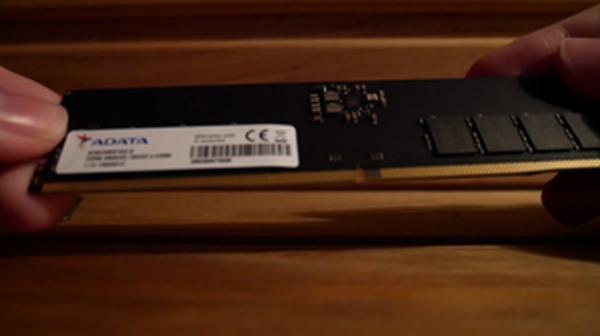
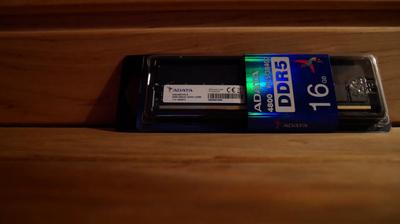
Specs of the ADATA Premier DDR5 16GB RAM
- Release Year
- Brand
- Compatible Devices
- Computer Memory Size
- Memory Speed
- Ram Memory Technology
Prices
Technological Evolution and Power Efficiency of the ADATA DDR5 Module
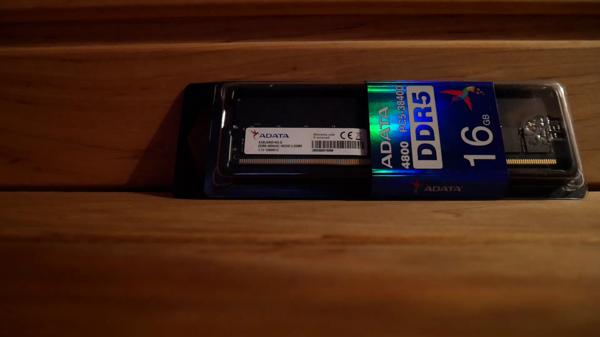
The ADATA Premier DDR5 4800MHz 16GB UDIMM Memory Module represents a step up in the technological evolution of system memory. What strikes me first is the ambition of ADATA to cater to both budget-conscious and power users alike. Here's how I see it:
Speed: The jump to DDR5 from its predecessors brings along an increase in frequency speed, which is evident in this module's 4800MHz.
Efficiency: It operates at just 1.1V, which is indicative of better energy efficiency compared to older DDR versions.
Capacity: Offering 8GB and 16GB gives users the flexibility to choose according to their needs and budgets.
Stability: The CL 40-40-40 latency and on-die ECC are telltale signs of enhanced stability and reliability in data processing.
Admittedly, the higher CAS latency at CL 40-40-40 initially raised my eyebrows, but it appears to be part-and-parcel of the newer DDR5 technology designed to maintain stability at higher speeds. The inclusion of on-die ECC is a commendable approach to increase reliability, which is a big plus for me.
When it comes to energy consumption, I'm all for tech that leans towards sustainability. The reduced voltage of 1.1V translates to lower power requirements, contributing to a diminished energy footprint. Plus, there's something to be said about the peace of mind that comes with ADATA's Limited Lifetime warranty.
As much as the overall impressions tilt towards the positive, there are a few points to consider. It's critical to ensure that both CPU and motherboard support the DDR5 format, as it's not backward compatible with DDR4 slots. And while 4800MHz is a significant step forward, the reality of platform costs raises a question as to whether the performance gain justifies the investment, especially when certain applications may not leverage the full potential of DDR5 just yet.
Although the default speed doesn't surpass 4800MHz, the fact that these modules work reliably without issues provides a solid foundation for average users and leaves room for power users to explore overclocking options.
In short, the ADATA DDR5 module offers a balanced proposition of performance and power efficiency with a nod to future-proofing, but weigh your current system requirements and budget before jumping on the DDR5 bandwagon.
Performance and Overclocking: A User Experience

As I embarked on my journey with the ADATA Premier DDR5 4800MHz 16GB UDIMM Memory Module, my expectations were cautiously optimistic. We've all heard the buzz around DDR5's superior performance capabilities, but does it live up to the hype? Here's a rundown from my personal test bench:
Frequency Speed: The jump from DDR4 to DDR5 is quite noticeable, with a higher frequency speed enabling a more responsive multitasking experience.
Latency: The CL 40-40-40 timings, while higher than some speedier DDR4 kits, are balanced out by the sheer speed and new architecture of DDR5.
Stability and Error Correction: The inclusion of on-die ECC is a game changer, providing that extra layer of reliability crucial for intensive workloads.
Energy Efficiency: The reduced voltage to 1.1V is not only a nod towards sustainability but also translates to less heat generation and potentially longer component lifespan.
One aspect I must highlight is overclocking. ADATA's memory module boasts a robust build that handles overclocking like a champ. I managed to push it to 5400MHz without any signs of distress—no smoke, no drama. This kind of headroom is excellent for enthusiasts who want just a bit more bang for their buck.
Of course, no memory module is perfect. The default speed of 4800MHz, while a step up from DDR4, may not seem like enough to justify the cost for some, especially with DDR4 prices dropping. However, it's also essential to bear in mind that the DDR5 platform is still in its infancy, and we're likely to see more performance enhancements as the technology matures.
Admittedly, there's an argument to be made that these modules might not be the best bang-for-your-buck choice if your focus is primarily on raw speed at the moment. Yet, if you're considering future-proofing your build and don't mind spending a bit more, this DDR5 module is a gateway into the next generation of memory technology.
Overall, my experience has been resoundingly positive. The ADATA Premier DDR5 module has provided a reliable and stable performance from day one. Whether it's for basic computing needs paired with a Celeron G6900 or as part of a high-end gaming rig, this memory holds its own. It's a no-fuss, plug-and-play solution that represents a modest foot-forward into the domain of DDR5.
If you're building a new system from scratch and are contemplating between DDR4 and DDR5, I'd recommend considering the benefits of future compatibility—especially if you plan to upgrade other components down the line. In the case of this ADATA DDR5 module, what you're getting is a reliable, warranty-backed memory that's ready to grow alongside the evolving ecosystem of DDR5-supportive hardware.
Comparing Capacities and Memory Stability

In my journey with the ADATA Premier DDR5 4800MHz 16GB UDIMM Memory Module, I've had quite an experience weighing the benefits of increased memory stability against selecting the right capacity for my needs. Here are some key elements that stood out:
Memory Stability: With CL 40-40-40 timings and on-die ECC, it's reassuring to have that layer of error correction ensuring the system’s stability, especially when dealing with more demanding applications.
Capacity Choices: The option to go with either an 8GB or 16GB module is great for budget flexibility. For me, starting with a 16GB capacity provides a sweet spot for both performance and future-proofing.
Compatibility and Upgrades: Be mindful that if you're upgrading, make sure your motherboard and CPU support DDR5, as it's not compatible with DDR4 sockets.
Power Efficiency: DDR5’s reduced voltage to 1.1V means there's an improvement in energy efficiency over its predecessors, which can add up in long-term savings.
One minor inconvenience I noticed, it doesn't run above 4800MHz without some tweaking. It's a bit discouraging when you're eyeing the overclocking headroom, but it does work flawlessly at the advertised speeds.
Here's a simple pro and con breakdown when it comes to my thoughts on the capacity and memory stability of ADATA's DDR5 module:
Pros:
Enhanced stability is a big win for me; my rig ran without a hitch even under load.
The choice between 8GB and 16GB makes it easier to fit a budget or scale up as needed.
Energy efficiency is also a plus; knowing my system runs leaner makes me feel like I'm doing my part.
Cons:
I found the lack of higher frequencies without overclocking a bit disappointing.
You'll need to invest in a new motherboard and CPU if you're coming from a DDR4 setup, which can be costly.
My personal experience has been mostly positive, even though there's always that bit of yearning for more speed. The Limited Lifetime warranty also helped tip the scales by assuring me I've made a reliable choice. I'm keeping an eye on potential future updates or patches that might further unlock the power of this memory module—it seems to be a habit of mine to hope for that extra edge.
In any case, the stability and efficiency of this DDR5 module haven’t failed me during everyday use and some light multitasking. As I continue to test this module with different applications and stress tests, I'm curious to see how it will hold up over time. After all, only real-world use can truly reveal the long-term benefits and potential shortcomings of hardware like this.
Considering the Investment: Price vs. Performance in the DDR5 Landscape

Venturing into the realm of DDR5 memory modules, I've spent the last few weeks evaluating whether the investment in higher-priced RAM pays dividends in performance. There's no denying that the ADATA Premier DDR5 4800MHz 16GB UDIMM Memory Module packs a bevy of features for the enthusiast looking to future-proof their system. Here's my breakdown:
Speed: The 4800MHz frequency is a leap from DDR4, offering the swift multitasking power I crave.
Latency: At CL 40-40-40, the latency isn't breaking records, but it's stable—a crucial factor.
Capacity Options: The choice between 8GB and 16GB lets me start modestly, with a clear upgrade path.
Energy Efficiency: Lower power consumption than DDR4 is a win for my electricity bill and the environment.
Warranty: The limited lifetime warranty brings peace of mind with my investment.
Despite the allure, there are some aspects to ponder. Is the jump to DDR5 essential right now? For instance, unless I'm using a high-end Z790 motherboard like some users, I can't capitalize on the potential overclocking headroom, making the cost-to-performance ratio a critical consideration. And although DDR5 promises superior power efficiency, I haven't noticed a drastic difference in my day-to-day tasks compared to DDR4.
Moreover, while I see room for growth and the potential to push past the 4800MHz barriers, as some users have, the reality is that not all users will feel comfortable or have the need to overclock their memory. And while ADATA's tagline "innovation redefining tomorrow" is bold, I would argue that the actual experience of DDR5 feels evolutionary, rather than revolutionary, at this stage.
However, there's also the fact that having DDR5 means I'm equipped for the future. Newer CPU generations and applications will likely harness the higher bandwidth and enhanced features of DDR5, which may justify the investment for some users, especially given its superior multitasking capabilities and developing technologies supporting memory-intensive tasks.
In conclusion, ADATA's DDR5 module checks the boxes for a solid, future-ready memory module, but it's worth weighing the benefits against your specific needs and budget. If you're building a high-end system or simply must have the latest tech, the investment seems sound. If you're assembling a basic PC or seeking bang-for-the-buck, you might consider sticking with DDR4 a while longer. Either way, ADATA's memory modules bring us one step closer to the next era of computing performance.
Comments (0)
Share